The Big Beach Biodiversity Survey
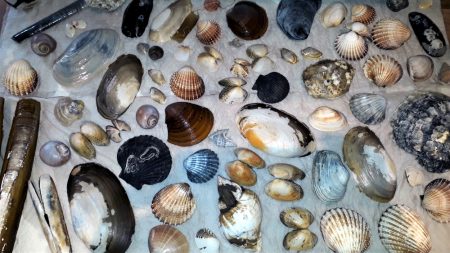
What?
Record marine species found cast up on Irish beaches.
Why?
The remains of species cast up by the tide can be a really useful indicator of what is living beneath the adjacent waves. It helps us map the distribution of marine species around the Irish coastline, and to find out what species occur at different times of year.
Our Goal?
To monitor changes in the distribution and occurrence of marine species linked to climate change and water quality.
Who?
Anyone visiting an Irish beach, whether you visit once or walk your beach on a regular basis.
How?
Take a photo of marine plants and animals cast ashore, whether dead or alive, and submit them by clicking HERE. Also record a rough estimate of how many of each species you saw. You can submit multiple species from the same beach using our submission form. The ideal time to survey the beach is 1-2hours before low tide.
Download a printable form HERE to bring with you to help you keep track of what you see during your survey/walk.
Photo hints:
- Get as close as you can
- Make sure your photo is in focus and well lit
- Make sure it is clean of debris and sand
- Take a photo of enough of the animal or plant to enable us identify it
- For bivalve shells, try to find two examples of the same shell and take a photo showing the interior and exterior of the shell
Some example species record shots are shown below.
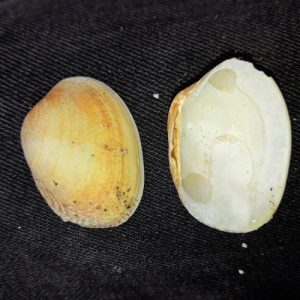
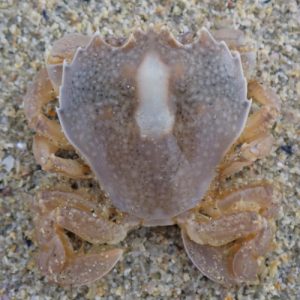
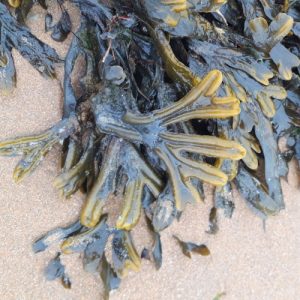
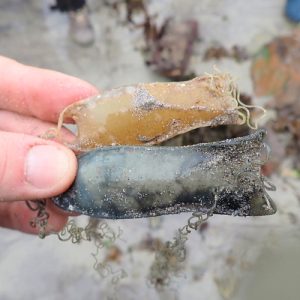
Photos: Pullet Carpet Shell; Pennant’s Swimming Crab; Horned Wrack; Lesser Spotted Dogfish Egg Cases.
Training?
Purchase our marine species swatches from our online shop, use one of the suggested seashore identifications guides on our resources page, keep an eye on our events and workshops pages for a training course near you, or complete our FREE online marine citizen science course.
Benefits:
- Learn how to recognise and record Irish coastal and intertidal species.
- Join a growing team of Citizen Science recorders helping to monitor Ireland’s coastal biodiversity.
- Use our Facebook Page to seek help with identifications and keep in touch with Explore Your Shore!
- Contribute to our knowledge of Ireland’s marine biodiversity.
What Happens to Your Records?
All records submitted are checked by an expert to see that the species has been correctly identified and that the position information is correct. Then it is uploaded to the Explore Your Shore! Data Set on Biodiversity Maps as Open Access data which anyone can download.
Validated records are also shared on the European Ocean Biodiversity Information System and on the Global Biodiversity Information Facility. Data contributed to Explore Your Shore! also forms part of UNESCO monitoring of Essential Ocean Variables.
Data Access
Access project data at https://maps.biodiversityireland.ie/Dataset/305
All Explore Your Shore! data is contributed thanks to the time and effort of our network of volunteer Citizen Scientists.
Shark & Ray Egg Cases
If you find shark, skate or ray egg cases (Mermaid’s Purses) then please submit your records with a photo of the egg case to our colleagues at Purse Search Ireland for identification and recording.
Stranded Whales and Dolphins
If you find a stranded whale, dolphin or porpoise, please submit your record with a photo of the stranded animal to our colleagues at The Irish Whale and Dolphin Group for identification and recording.
Safety on the Beach
- Before doing a Big Beach Biodiversity Survey check the weather forecast and the tides.
- Be aware of the dangers of an incoming tide and becoming trapped or cut off by the tide. Aim to start your survey 1 – 2 hours before low water and be off the beach before the tide changes.
- Tell somebody where you are going and what time you expect to be back.
- Dress appropriately for the weather and wear appropriate footwear for the ground you will be walking.
- Stay clear of the base of cliffs or steep dunes as there is a danger of falling rocks or being buried by sand or cliff material.
- Bring a fully charged mobile phone with you in case you need to call for help. If you do need to call for help, dial 999 or 112 and ask for the Coastguard.



